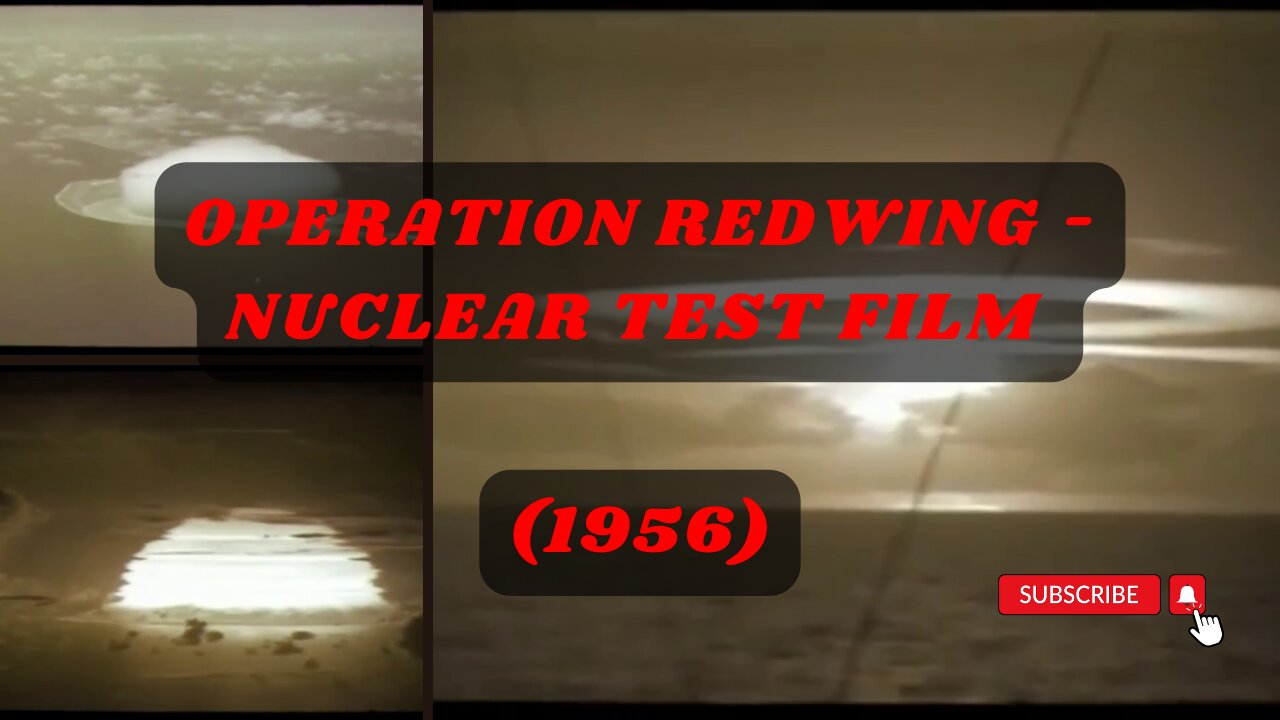Premium Only Content

Blast from the Past: Operation Redwing's Test - First-Ever Airdrop of a Thermonuclear Weapon
From May 4 to July 21, 1956, Operation Redwing unfolded as a pivotal 17-test nuclear weapons series at the Pacific Proving Ground. The Atomic Energy Commission (AEC) orchestrated these tests to evaluate high-yield thermonuclear devices, a task unfeasible at the Nevada Test Site.
Over 10,000 military personnel and civilian employees from the AEC and the Department of Defense actively participated in these nuclear trials. Notably, the USS Mt. McKinley hosted 15 American press, radio, and television reporters who observed the LACROSSE and CHEROKEE tests. Remarkably, these journalists marked the first uncleared U.S. civilians in a decade to witness an American nuclear test in the Pacific.
During Operation Redwing, the AEC made significant strides in miniaturizing warheads. This progress allowed for the deployment of warheads equivalent to the 90-ton MIKE device from a bomber. The series also contributed to advancing the AEC's designs for nuclear weapons aimed at minimizing fallout. Moreover, it furnished critical insights for the development of nuclear warheads tailored for missiles.
The comprehensive nature of Operation Redwing extended to exposing complete weapons systems to blast effects. A notable milestone was the successful use of a fallout computer for the first time during these tests. Among the series highlights was the CHEROKEE test, representing the inaugural airdrop of a thermonuclear weapon by the U.S. military.
-
 LIVE
LIVE
Russell Brand
13 hours agoThe Battle for Power: Trump’s Plan, Elon’s Purge & the DEI Illusion – SF545
5,301 watching -
 LIVE
LIVE
The Charlie Kirk Show
50 minutes agoAmerica's Spiritual Revival + Runaway Judges + Vivek For Ohio | Habba, Waggoner, Vivek | 2.27.2025
5,459 watching -
 58:33
58:33
The Dan Bongino Show
3 hours agoAmerica's A-Team Hits The Ground Running (Ep. 2432) - 02/27/2025
482K557 -
 1:19:38
1:19:38
The Rubin Report
2 hours agoCNN Host Brutally Mocked for Trying to Profit Off of What He Called a ‘Conspiracy’
28.9K13 -
 LIVE
LIVE
Benny Johnson
18 hours ago🚨BREAKING: Epstein List, Flight Logs RELEASED Any Minute By Trump | ELITES IN PANIC
19,904 watching -
 2:10:17
2:10:17
Steven Crowder
3 hours agoEpstein File Watch & DOGE’s $17M Muppet Show Explained
328K230 -
 1:04:22
1:04:22
Timcast
2 hours agoTrump Orders ALL TRANS MILITARY Discharged, Trans Person CAUGHT With BOMBS At Tesla Dealership
71.6K82 -
 LIVE
LIVE
LFA TV
16 hours agoPAYBACK = JUSTICE! | LIVE FROM AMERICA 2.27.25 11AM
4,893 watching -
 DVR
DVR
Bannons War Room
9 days agoWarRoom Live
2.37M414 -
 2:17:39
2:17:39
Matt Kohrs
12 hours agoBREAKING MARKET NEWS: Bounce or Bust?! || The MK Show
48.1K1